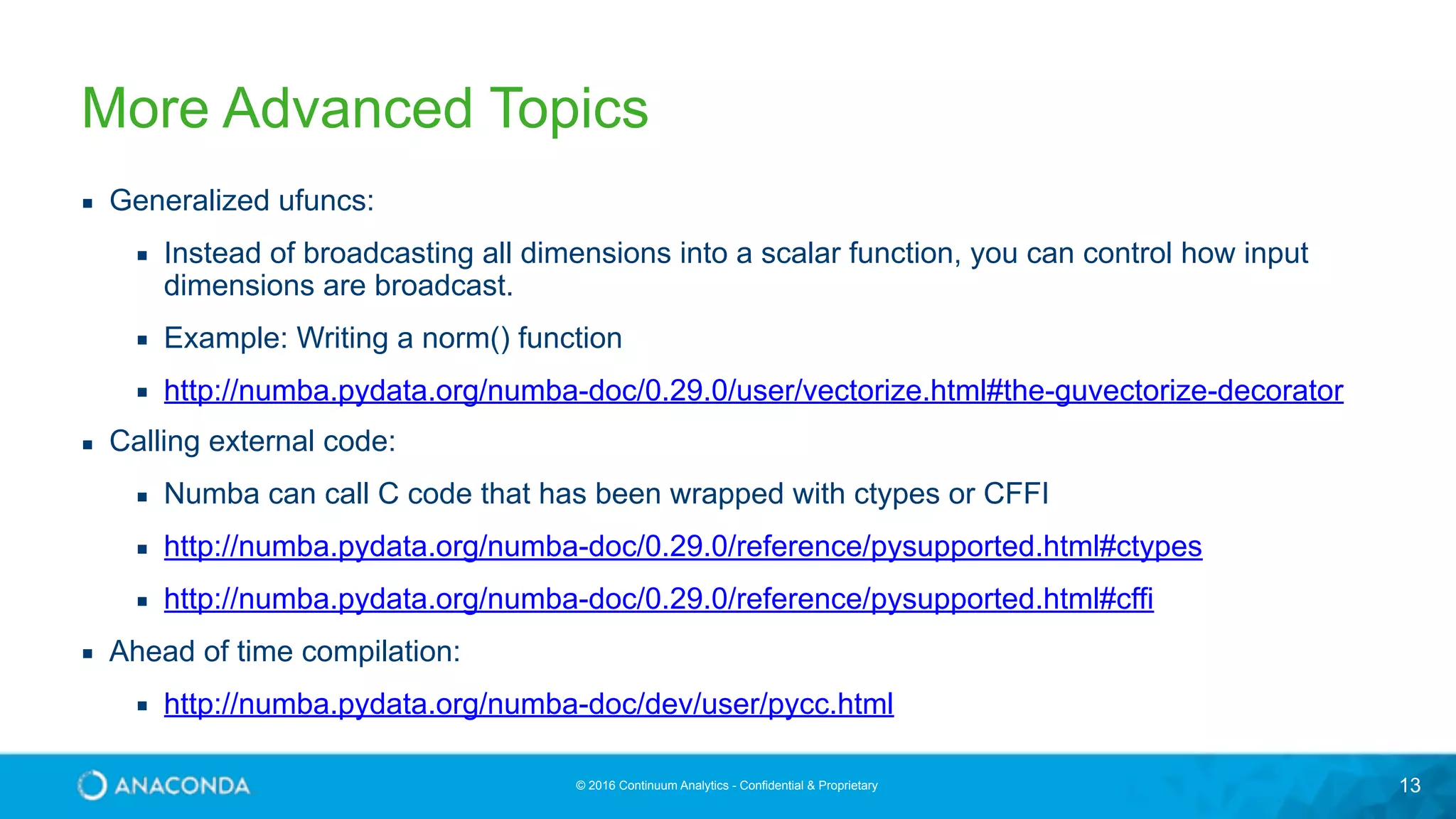Numba is an open-source JIT (just-in-time) compiler for Python functions that significantly speeds up code execution, achieving speedups from 2x to 200x compared to regular Python. It supports a variety of platforms and hardware, enabling optimization for single-threaded, multi-threaded, and GPU execution models, while being especially effective for loop-heavy numerical algorithms and numpy arrays. The document provides an overview of Numba's capabilities, tutorials, and guidelines for best utilization.

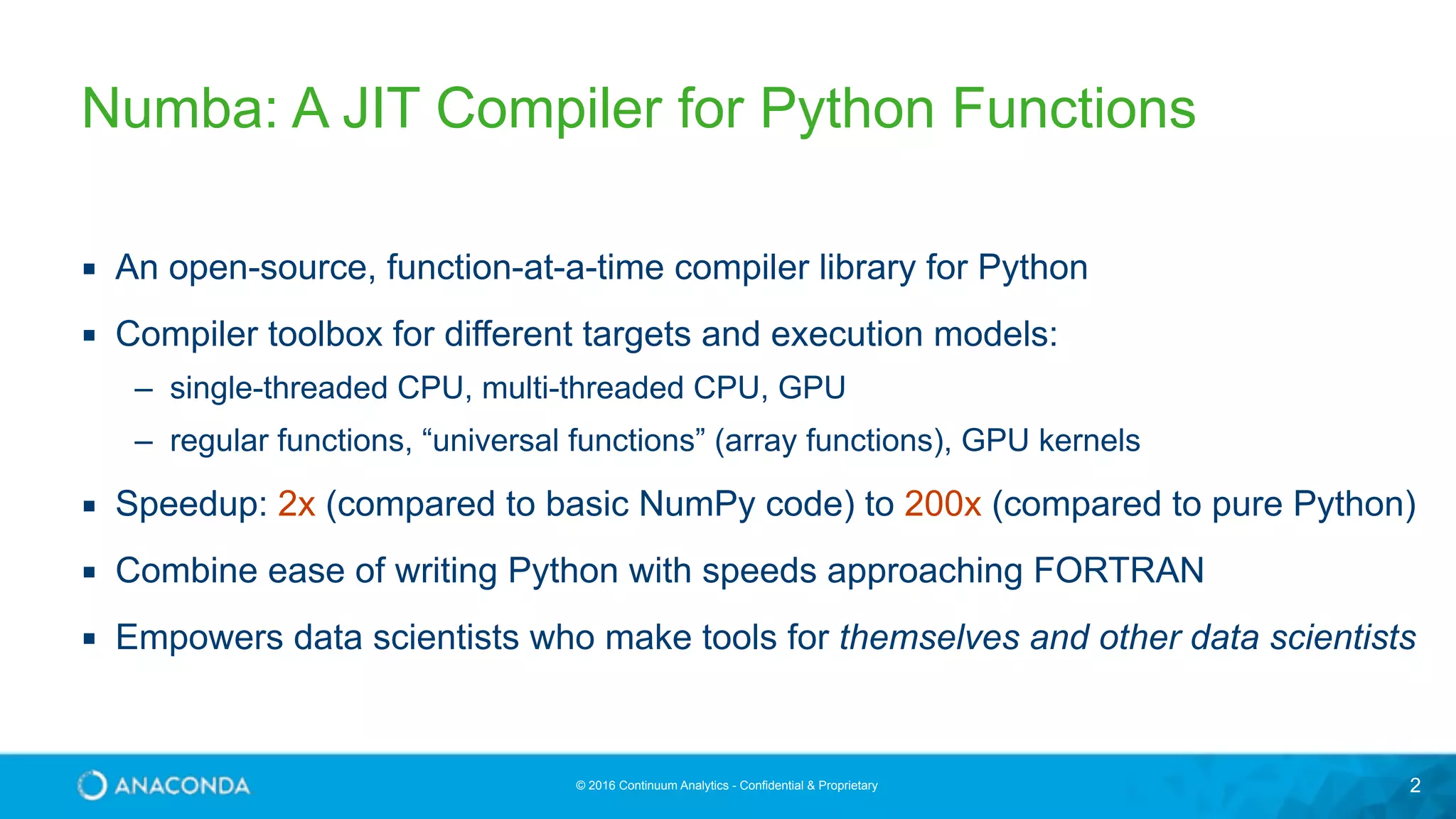
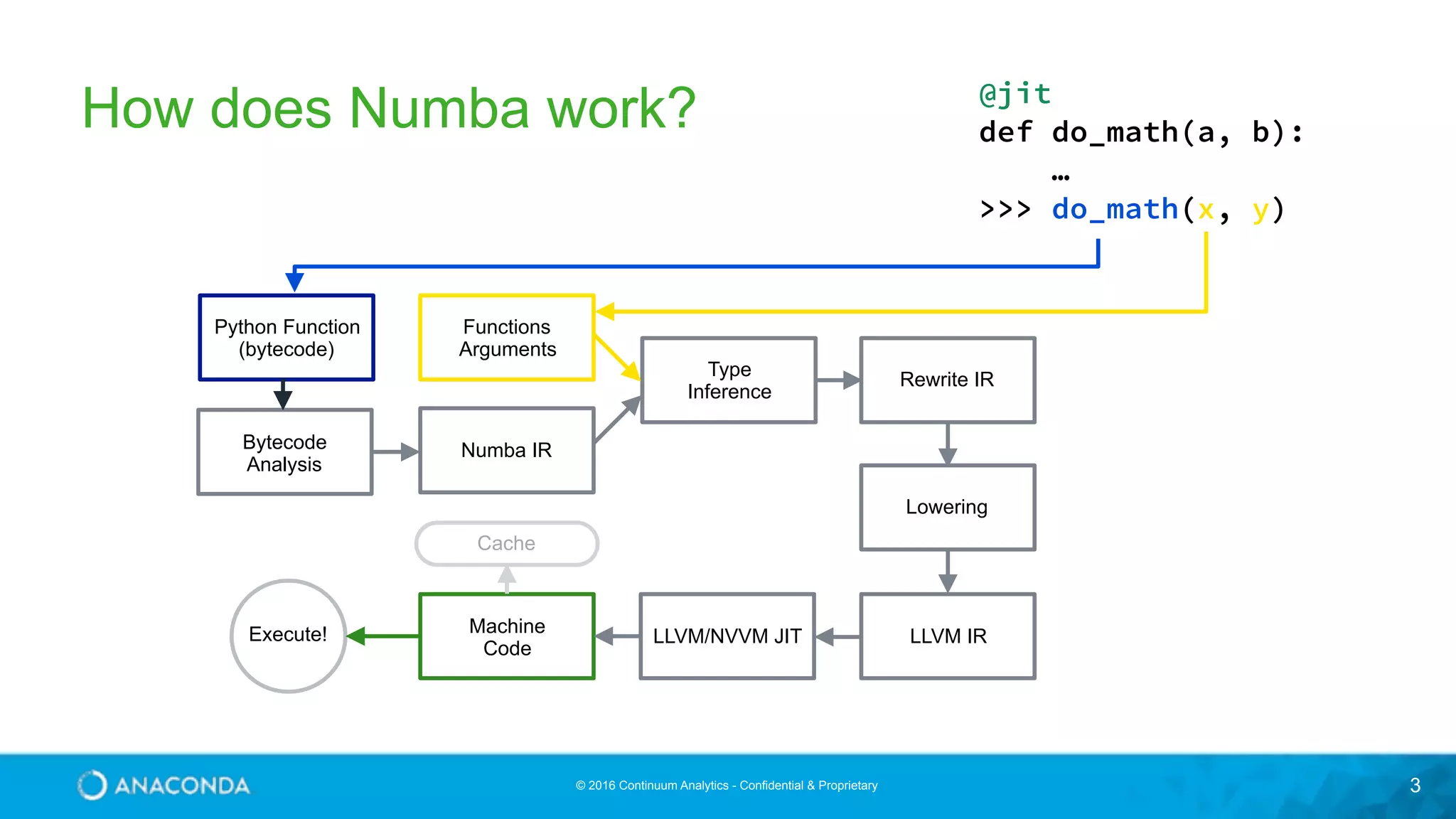

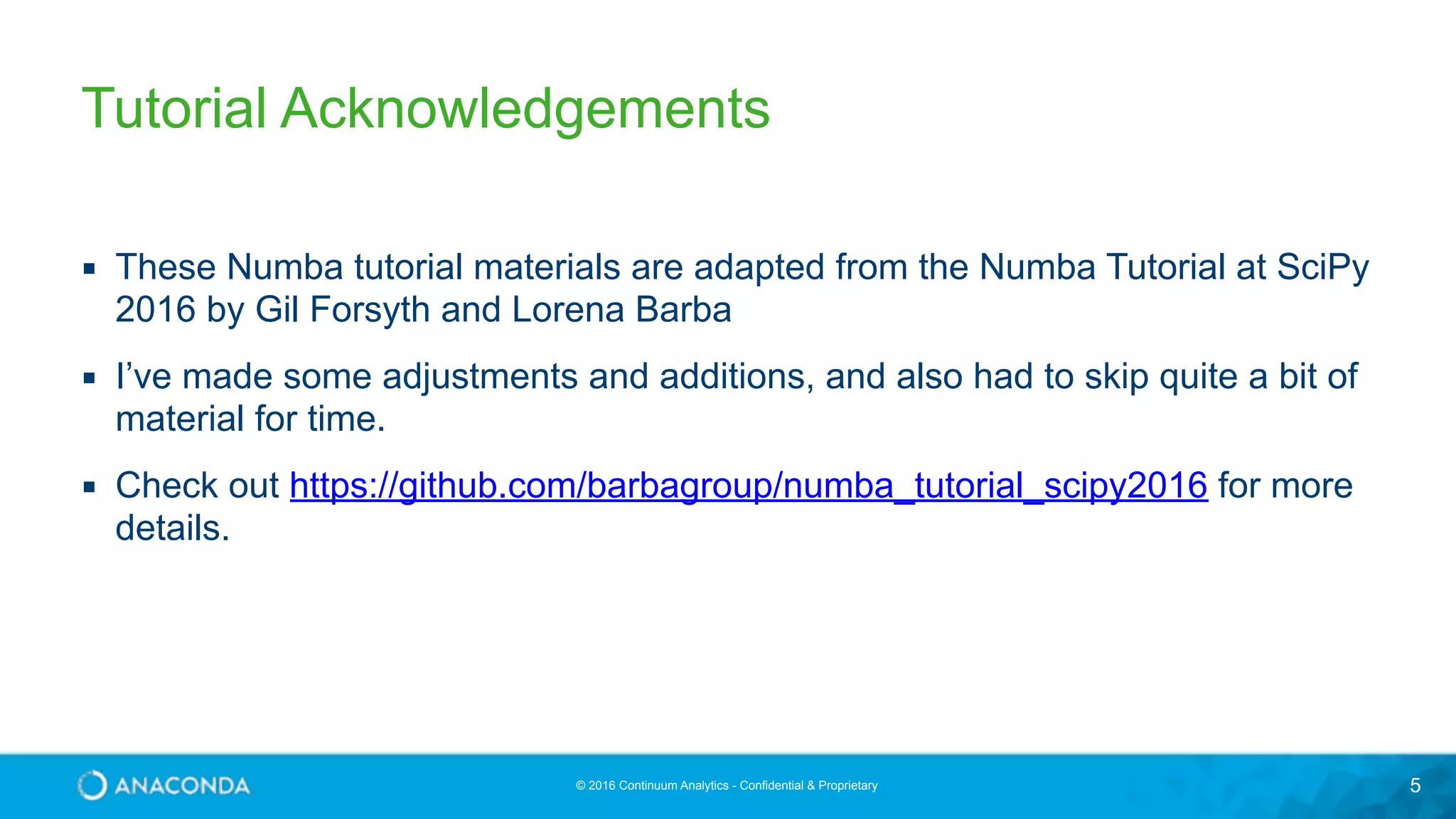



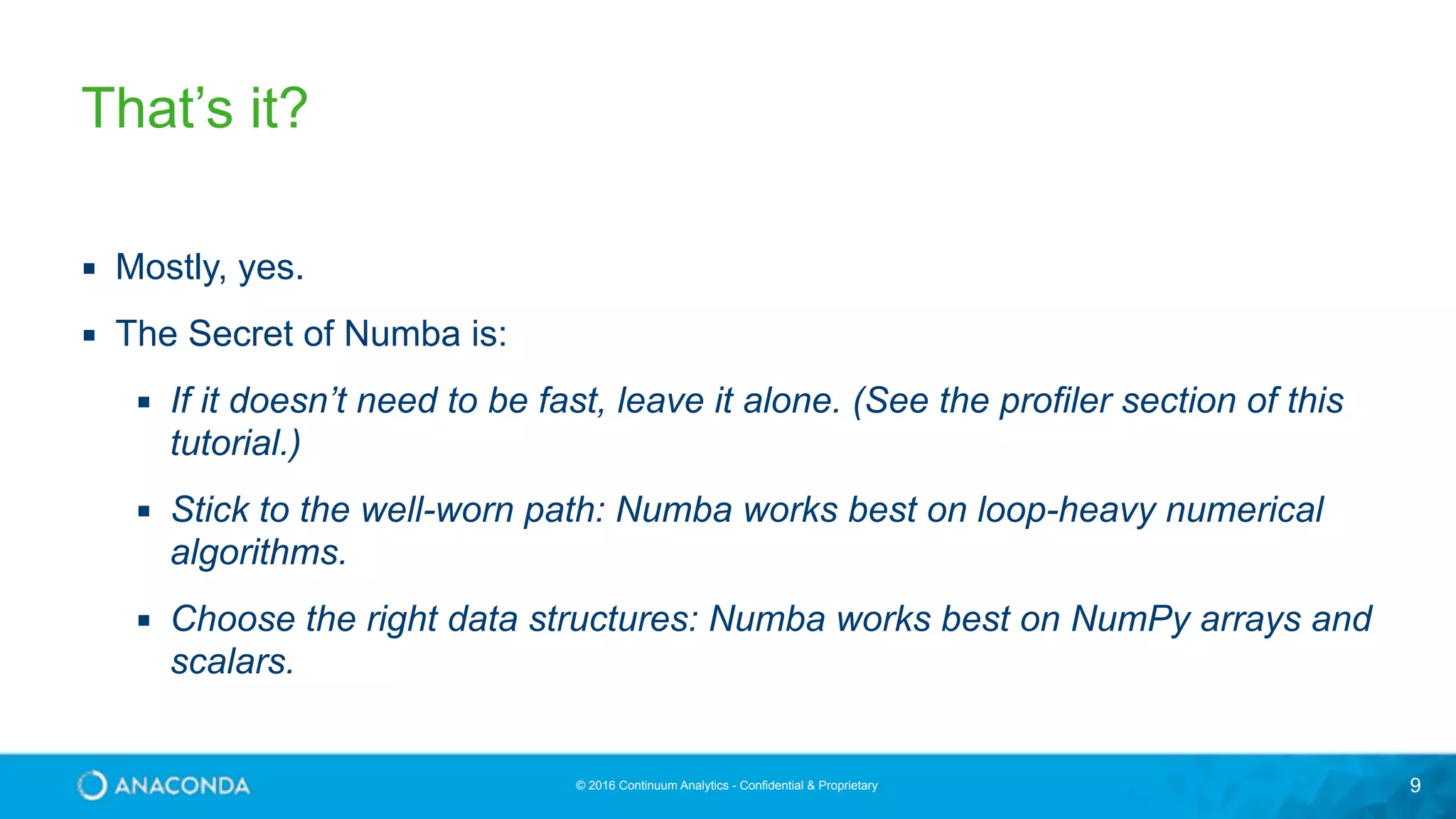
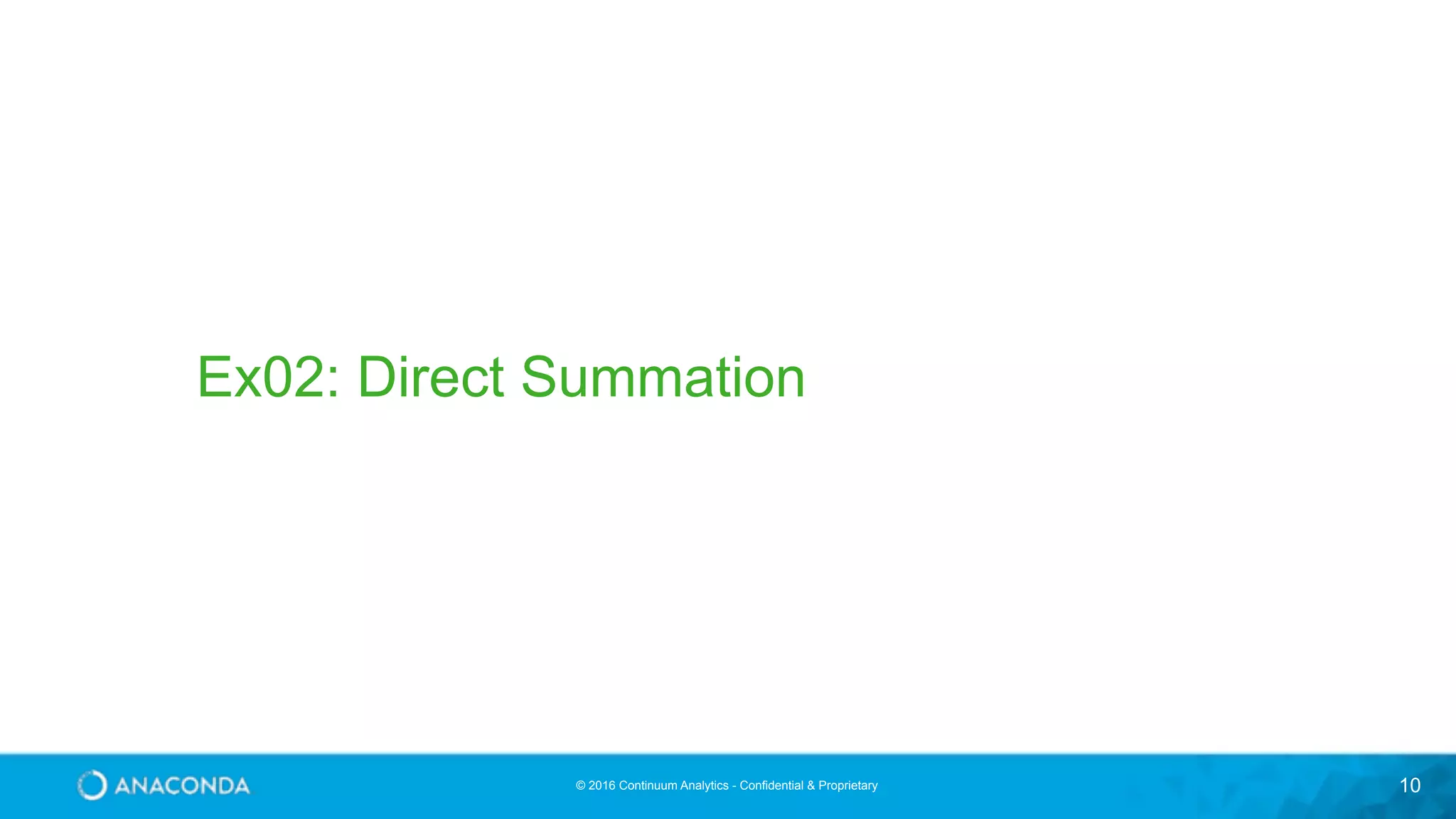
![© 2016 Continuum Analytics - Confidential & Proprietary 11 There is more, though. ▪ Numba can compile other kinds of functions: ▪ Universal function (ufuncs) apply a scalar function to elements of the input arrays according to the broadcast rules: numpy.add([1, 2, 3], 1) == [2, 3, 4] numpy.add([1, 2, 3], [10, 20, 30]) == [11, 12, 13]](https://image.slidesharecdn.com/hol-stan-seibert-accel-python-thr-prof-tun-comp-numba-tut-170628194127/75/Accelerate-Your-Python-Code-through-Profiling-Tuning-and-Compilation-Part-2-Numba-11-2048.jpg)

